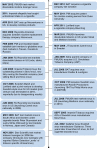Transnational tobacco company interests in smokeless tobacco in Europe: analysis of internal industry documents and contemporary industry materials
- PMID: 24058299
- PMCID: PMC3769209
- DOI: 10.1371/journal.pmed.1001506
Transnational tobacco company interests in smokeless tobacco in Europe: analysis of internal industry documents and contemporary industry materials
Abstract
Background: European Union (EU) legislation bans the sale of snus, a smokeless tobacco (SLT) which is considerably less harmful than smoking, in all EU countries other than Sweden. To inform the current review of this legislation, this paper aims to explore transnational tobacco company (TTC) interests in SLT and pure nicotine in Europe from the 1970s to the present, comparing them with TTCs' public claims of support for harm reduction.
Methods and results: Internal tobacco industry documents (in total 416 documents dating from 1971 to 2009), obtained via searching the online Legacy Tobacco Documents Library, were analysed using a hermeneutic approach. This library comprises documents obtained via litigation in the US and does not include documents from Imperial Tobacco, Japan Tobacco International, or Swedish Match. To help overcome this limitation and provide more recent data, we triangulated our documentary findings with contemporary documentation including TTC investor presentations. The analysis demonstrates that British American Tobacco explored SLT opportunities in Europe from 1971 driven by regulatory threats and health concerns, both likely to impact cigarette sales negatively, and the potential to create a new form of tobacco use among those no longer interested in taking up smoking. Young people were a key target. TTCs did not, however, make SLT investments until 2002, a time when EU cigarette volumes started declining, smoke-free legislation was being introduced, and public health became interested in harm reduction. All TTCs have now invested in snus (and recently in pure nicotine), yet both early and recent snus test markets appear to have failed, and little evidence was found in TTCs' corporate materials that snus is central to their business strategy.
Conclusions: There is clear evidence that BAT's early interest in introducing SLT in Europe was based on the potential for creating an alternative form of tobacco use in light of declining cigarette sales and social restrictions on smoking, with young people a key target. We conclude that by investing in snus, and recently nicotine, TTCs have eliminated competition between cigarettes and lower-risk products, thus helping maintain the current market balance in favour of (highly profitable) cigarettes while ensuring TTCs' long-term future should cigarette sales decline further and profit margins be eroded. Please see later in the article for the Editors' Summary.
Conflict of interest statement
ABG is a member of the Council of Action on Smoking and Health, and a member of the WHO Expert Committee convened to develop recommendations on how to address tobacco industry interference with tobacco control policy.
Figures
References
-
- Euromonitor International (December 2010) Global Tobacco–Key Findings. Part One - Tobacco Overview and Cigarettes: Resilience or Decline? London. Available (by subscription) from: www.euromonitor.com. Accessed 2 July 2012.
-
- Dyrbus B (2011) Deutsche Bank Global Consumer Conference. Paris: Imperial Tobacco.
-
- Jacek Olczak (2012) Investor Day Lausanne June 21 2012: Presentation script by Jacek Olczak, President European Union Philip Morris International Inc. Available: https://edge.media-server.com/m/s/a27vta8g/p/ny3a2u57/l/1. Accessed 2 July 2012.
-
- Euromonitor International (2011) Cigarette Retail Volume (mn sticks) Western Europe and Eastern Europe 1997–2011. London. Available: http://www.euromonitor.com. Accessed 2 October 2012.
Publication types
MeSH terms
Grants and funding
LinkOut - more resources
Full Text Sources
Other Literature Sources
Medical


